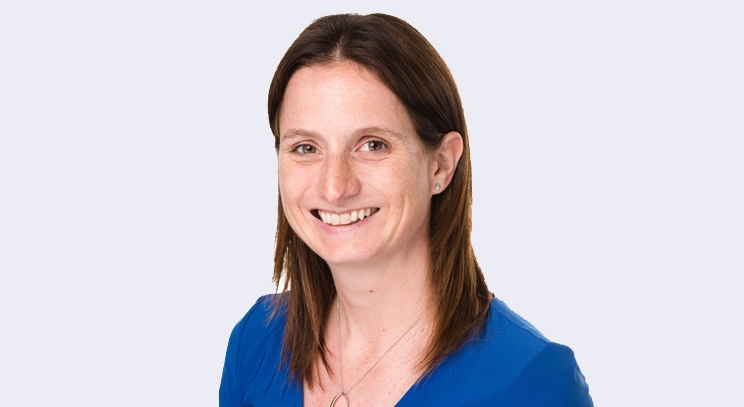- Home
- dunnhumby Life
- Why we’re introducing gender-neutral job descriptions

It's not what you say; it's how you say it. As part of a drive to attract more women to areas where we've struggled to build a balanced shortlist historically (e.g. technical positions such as data scientists), we're introducing an insight and research-led approach to how we write our job descriptions.
Diversity is a key focus for us at dunnhumby; the race is on for all companies to achieve a more gender-balanced boardroom and therefore we all have an important part to play. This isn't a women's issue, it's a business issue. What's more – examining over 1,000 companies across 12 countries last year – management consultant firm McKinsey & Co found that businesses in the top quartile for gender diversity were likely to perform better and benefit from higher profit margins.
Diversity at dunnhumby
Working with the inclusive careers site Vercida, we recently ran a campaign to help us spread the word about our 'Women in dunnhumby' programme. Created to support women throughout the various stages of their careers, the initiative involves matching employees with mentors, running webinars and networking events, and propelling women into exciting leadership roles. In addition, our 'Unconscious Bias' training programme – designed to equip and empower our leaders – is compulsory for all UK people managers at dunnhumby. Our focus on diversity continues to expand with the launch of four new community-led networks, an enhanced shared parental leave offering and promotion of flexible working stories.
Businesses can't continue to pay lip service to the issue of gender diversity. In 2019, getting it right depends on setting realistic, measurable goals and taking action. To make this happen, we've pledged to improve the number of women in our management roles by 2% – every year. Naturally, this may prove easier in some business areas than others, where we have traditionally struggled to recruit female talent.
What makes an excellent job description?
Any sensible hiring manager knows that a good job description can make or break the application process. Even so, when pressed for time it's all too easy to become complacent and write them quickly to get the message out there.
A great job description should do three things:
- Give a clear idea of the job
- Give a flavour of what it takes to do the job well
- Achieve both of the above in less than 600 words
The copy in your job description should be punchy and effective, with every word working hard to attract the right candidate. Get it wrong, and it can sound like a list of clichés – hinged on someone's past performance, qualifications and experience. True diversity requires the human touch and an open mind.
Striking the perfect balance
As the need to create a well-rounded shortlist becomes more pressing, we've started to challenge how we're reaching out to new candidates by changing what exactly we're saying to attract the right applications.
In the search for talent, language matters more than you'd think. Back in 2013, a Yale Scientific study found that when scientists at research-intensive universities were given two fictional CVs – one for John and one for Jennifer – detailing the same achievements, goals, and personal statements, the male candidate was judged far more favourably than the female.
It's easy to see why this could be deemed controversial, but whether we like it or not, bias exists in language – and it deserves our attention. Informed by research, we've introduced software to highlight 'gendered' language, thus making our job descriptions more attractive to both men and women.
But I thought all job descriptions were gender-neutral?
Without realising it, we all use language that is subtly 'gender-coded'. Society has different expectations of men and women, and this tends to seep into the vocabulary we choose. Words like 'feisty' and 'bossy', for example, are rarely used to describe men. Broadly speaking, research finds that while men are attracted to strong, definite words like 'leader', 'competitive' and 'dominant', women are more likely to be attracted to softer, more flexible language like 'support', 'understand' and 'interpersonal'.
As a result, linguistic gender coding can find its way into job descriptions where it can be off-putting or discouraging to some – not ideal when you're trying to attract a diverse talent pool.
When analysing the type of language used to craft these mini briefs, a study from the American Psychological Association found "systematic wording differences within a randomly sampled set of job descriptions":
"When job advertisements were constructed to include more masculine than feminine wording, participants perceived more men within these occupations and importantly, women found these jobs less appealing."
This statement alone just goes to prove the power and influence a particular lexicon of words has over the perception of a job description, and how it's in the hands of the author to truly do something about it.
Small steps can lead to great change
So far, we've been using software to bring our attention to 'gendered' words. While it's too early to judge anything from the results just yet, we've already seen an increase in the number of women in managerial roles and above – a 2% improvement in the past year alone.
Of course, we are all individuals, and must be treated as such at every stage of the talent acquisition journey. This is just due diligence, ensuring we've done all we can not to alienate anyone, whether consciously or unconsciously. Making a few subtle tweaks to the type of language used is one way to ensure you reach the best possible talent pool via your job descriptions – securing that all-important, well-balanced shortlist.

Most companies merely meet expectations. dunnhumby defies them, using big data, deep expertise and AI driven platforms to decode human behaviour and habits.
Read more



